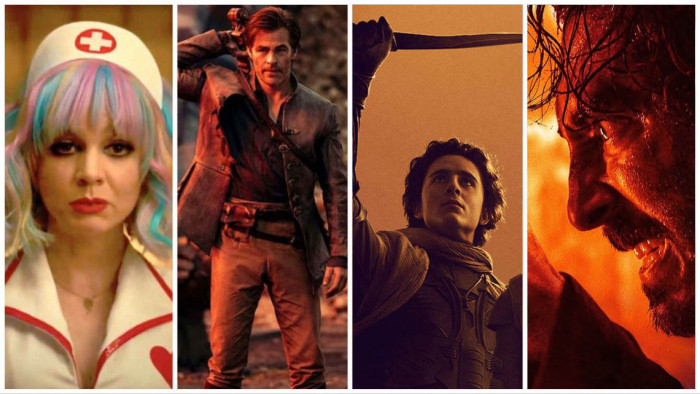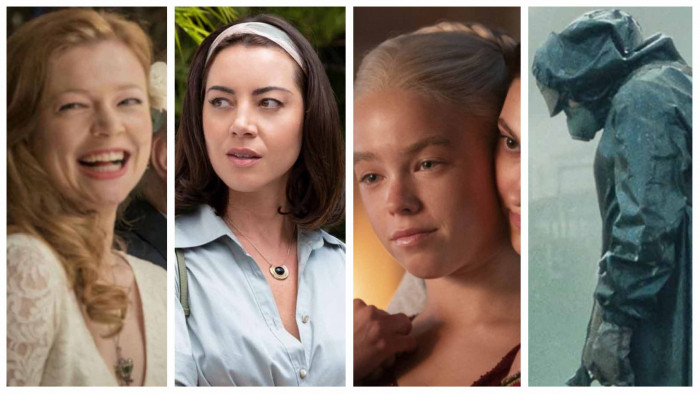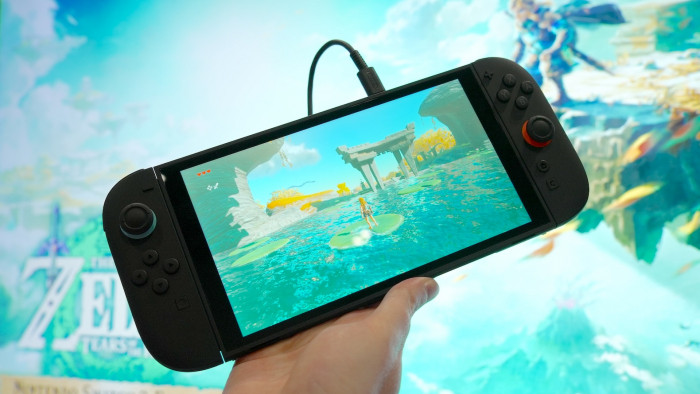I grew up in the Eighties, the best decade in history, as anyone who grew up in the Eighties will insist on telling you.
You know all the clichés. Gigantic mobile phones. Independent music. Pastel-coloured jackets with the sleeves rolled up. It was, as they say in these pieces, a less complicated time. Particularly for men.
Looking back now, with 30 years’ worth of hindsight, Eighties manhood seems more than a little problematic, and certainly more complex than it appeared then. It was a decade when men went from bottling up their emotions to barely being in control of them. When we swung between extreme over-indulgence and the extreme pursuit of the perfect physique. When to be a man was to show just how much you could hurt yourself, or those around you.
And this was reflected in the heroes we had. In fact, from this distance the Eighties starts to look like a decade when the best that manhood had to offer was represented by homicidal robots, sexual harassers, psychopaths, cocaine barons and worse.
So was everything we learnt about being men in the Eighties… wrong?

Mike Tyson - just another example of our willingness to forgive terrible male behaviour?
At first glance, Eighties men were simple, just like men were supposed to be. Uncomplicated virtues such as strength, stoicism and endurance were what made men men. I’ve never forgotten double Olympic gold winner Daley Thompson – possibly the greatest athlete the UK has ever produced – in the twilight of his career at Seoul in 1988, still heroically competing for the decathlon bronze in the 1,500m despite a thigh full of shrapnel from a broken vaulting pole.
To me it seemed like the essence of a certain kind of laudable no-nonsense, masculine grit. Here was a man, alone, doing what men are supposed to do, to the bitter end. Never mind the fact that Thompson, with his stubbornness, and rudeness, and worse (at the 1984 Olympics he wore a T-shirt with the slogan ‘Is the world’s 2nd greatest athlete gay?’ as a dig at Carl Lewis) made himself so hard to actually like.
But then again – what kind of Eighties man worried about being liked? Recent interviews have hinted at the racism Thompson faced throughout his career, but he still refuses to discuss the subject, preferring instead to present a picture of a man who just got on with things, stubbornly smashing his way through every obstacle he encountered. And this is the same model of masculinity that gave us the Eighties cinematic action hero – supposedly the paradigm of manly virtue – who taught us that the answer to most problems was a fixed expression, a few choice one-liners and the effective application of extreme violence.
“The perfect Eighties man was, we were told, an amoral, aggressive, sociopathic high-achiever”
In the Rambo and Terminator films, and countless others, Sylvester Stallone and Arnold Schwarzenegger (not to mention Chuck Norris, Steven Seagal, Jean-Claude Van Damme and many, many more) did their best to show as little emotion as possible while despatching their enemies in ever bloodier and more inventive ways. Relationships, sex, romance, even friendship were irrelevant, because our invulnerable heroes almost always worked alone.
As Kyle Reese says of The Terminator: they didn’t feel pity, or remorse, or fear, and they absolutely would not stop until you were dead. Or until they ran out of sequels.
That these mostly emotionless, robotic (and not always on account of their bad acting) characters could be taken as models of ideal masculinity might seem bizarre, but to quote the Terminator film series again – Sarah Connor in Terminator 2 this time, as she watches the killer robot looking after her son – “of all the would-be fathers who came and went over the years, this thing, this machine was the only one who measured up”.
And the measuring up was the important thing, here. Schwarzenegger was a former Mr Universe, who Stallone spent the decade trying to catch up with. And the rest of us followed, going from working out with our first set of Argos dumbbells to eventual gym membership, as body-building went from a niche sport to a mainstream past-time to an expectation. Suddenly men were being publicly objectified, having their bodies judged and commoditised in a way that had previously been reserved for women. And, because this was the Eighties, the only direction this could go was toward more.

Arnold Schwarzenegger in The Terminator
Turbo-charged by ‘Big Bang’ deregulation in the City and Wall Street, the Thatcher and Reagan years were an era of hyper-indulgence and excess. Satirised (but only just) in the terrifying form of American Psycho’s Patrick Bateman, the perfect Eighties man was, we were told, an amoral, aggressive, sociopathic high-achiever.
Greed was good. It’s no accident that this was the decade when Donald Trump first established himself in the public consciousness as both a businessman and a brand, publishing The Art Of The Deal and advising anyone who wanted to follow in his footsteps to “think big… know your market… and fight back”. From Robert Maxwell to Michael ‘The Junk Bond King’ Milken to Pablo Escobar, it was an era of crooks, conmen, insider traders and worse. Ultimately, the only thing that mattered was what you could get away with.
But in all this excess we also saw the flipside to stoic masculinity – a heroic self-destructiveness that looked, at times, like a collective nervous breakdown. Real men had always eaten too many steaks and drank and smoked too much, if only to show that they were invulnerable to the effects of these things. Even when The Official Coolest Man Who Ever Lived, Steve McQueen, died of lung cancer at the age of only 50 at the start of the decade, he seemed to do it with a shrug. However, McQueen turned out to be the last of his breed. As the decade went on, famous men began destroying themselves in public at an increasing rate. In the music business the non-stop partying of the Seventies had turned into repeated overdoses and endless trips to rehab.
In sport, everyone from snooker stars to footballers suddenly seemed to be addicted to booze, drugs or gambling. As a kid growing up in this era, these were the men we looked up to. The men whose lives we aspired to, whose actions we tried to emulate. What was happening to men? And what knock-on effect was this having on boys?

Diego Maradona: flawed genius
On the sports field, a new kind of superstar athlete had emerged, who seemed to be at odds with everything that someone like Daley Thompson stood for. Here were men who, far from bottling up their emotions in order to succeed, did exactly the opposite.
We saw it first in tennis, as the Seventies Scandi professionalism of Björn Borg gave way to the hyper-neurotic man-boy antics of John McEnroe, heart always on his sleeve and racquet quite often smashed on the ground, inspiring a generation of us schoolboys to shout “you cannot be serious!” at everyone from teachers to parents.
The McEnroe template was taken up by Andre Agassi, another child prodigy who skirted even closer to complete emotional breakdown. And its ultimate expression was found in the twin self-immolating sporting geniuses/idiots of Diego Maradona and Paul Gascoigne. In their apparent inability to control even their own mercurial talents, these two were the perfect opposite of the traditional, professional, strong-but-silent sportsman.
But were they better role models? While Gazza’s tears at Italia 90 exploded the macho image of the footballer, paving the way for football’s cultural re-acceptance after a decade of hooliganism and decline, the revelation of his violent abuse of his wife was proof that toxic male behaviour can’t just be overcome with a rebrand, or by replacing old-fashioned men with over-indulged boys. And here was an issue we couldn’t avoid. Despite – or maybe even because of – the cracks that were appearing all over the old edifice of masculinity, men were still behaving terribly where women were concerned.
“Have we been irreparably damaged? And, therefore, are we in turn destined to become the problematic role models for a new generation of young men?”
When Iron Mike Tyson, the athlete presented as ultra-male monster – savage and unstoppable (“The Baddest Man on the Planet!”) – was eventually found guilty of rape, the crime was almost presented as an inevitable part of his character arc. Well of course. Now re-invented as an actor, philanthropist, recovering addict, religious convert and occasional motivational speaker, is Tyson’s a story of rehabilitation and overcoming destructive masculinity (and racism), or just another example of our willingness to forgive terrible male behaviour?
At the other end of the scale – but it still is a scale – ‘rebel billionaire’ Richard Branson is still, 30 years on from the decade when he made his name, appearing in publicity photos with female employees in his arms/slung over his shoulder/clinging naked to him while kite-surfing. Branson, it seems, like a lot of our Eighties heroes, was happy to rebel against everything except traditional gender roles.
Most complicated for many of us were the two Eighties icons who were the same man: Han Solo and Indiana Jones – played, of course, by Harrison Ford, with whose Eighties representations of manhood an entire generation is possibly still struggling with. At first glance, Ford’s film persona seemed to offer an antidote to the one-dimensional killing machines played by Stallone and the rest. His characters were cool, funny and, most importantly, they had actual relationships with actual women.
But from The Empire Strikes Back’s Han-Leia homage to Thirties battle-of-the-sexes screwball comedies onwards, throughout the Eighties Ford’s characters were matched up with apparently uninterested/repressed ice queens (and princesses) who had to be warmed up – sometimes with charm, sometimes more forcefully – before they realised that they couldn’t resist him. Leia. Marion, Willie and Elsa in the Indiana Jones films. The Rachaels in Blade Runner and Witness. At best this starts to look like sexual harassment. At worst, as in Deckard’s ‘seduction’ of the replicant Rachael in Blade Runner, it looks like something pretty nasty. Was this really how men were supposed to behave?

Harrison Ford and Sean Young in Blade Runner
An entire generation of Eighties kids have now grown into 2010s men. Men with careers, with families. Men who are no longer looking up to sports stars, entrepreneurs, action heroes and musicians, but who have become those people. So are the values (or lack thereof), attitudes and behaviours of our one-time role models ingrained in us today? Have we been irreparably damaged? And, therefore, are we in turn destined to become the problematic role models for a new generation of young men?
It’s true that we’re not exactly awash with examples of fine, upstanding masculinity at the moment – and it’s clear we’ve been following some fairly horrifying examples. But we’re the grown-ups now. We can’t blame anyone else for who we turned out to be. And we’re responsible for what happens next – to us and to our sons.
The good news is that recognising the problem is the first step to recovery. And what’s more heroic than deciding to be a better man? Like The Terminator turning into a good guy. Like every one of those Rocky training montages. There’s still time for us to re-invent ourselves as human beings.
Sylvester Stallone keeps having comebacks. Why shouldn’t the rest of us?
Booth’s book What We’re Teaching Our Sons is out now, £10 (4th Estate)
(Images: Getty/AllStar)











